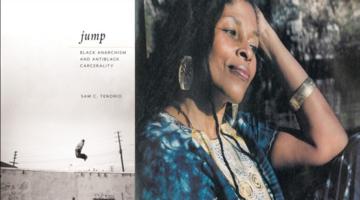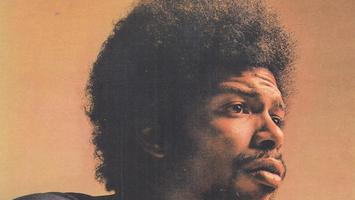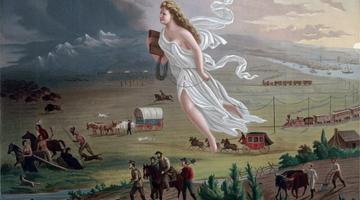Multiple world crises require that humans construct new designs according to very different principles and categories than those of capitalist modernity.
“We design the world and the world designs us back.”
In this series, we ask acclaimed authors to answer five questions about their book. This week’s featured author is Arturo Escobar. Escobar is Kenan Distinguished Professor of Anthropology at the University of North Carolina, Chapel Hill.His book is Designs for the Pluriverse: Radical Interdependence, Autonomy, and the Making of Worlds.
Roberto Sirvent: How can your book help BAR readers understand the current political and social climate?
Arturo Escobar: Designs for the Pluriverse is precisely about design’s embeddeness in the contemporary world, including its role in creating the multiple crises the world faces today. It is also, consequently, about the potential for reclaiming design for other world-making purposes—less ridden by multiple axes of domination in terms of class, gender, race, coloniality, heteronormativity, the disregard for nonhumans, and so forth. “We” (where “we” should be read as applying more directly to those most directly benefiting from global patriarchal/colonial capitalism) are literally destroying the world at an alarming rate, and I am not just talking about the disappearance of species and the manifold and increasingly destructive effects of climate change. I am also talking about the disruption of basic human sociality, the breakdown of social relations, the proliferation of wars and violence, massive displacement of peoples and nonhumans, abhorrent inequality, racism and xenophobia, and the difficulty many young people face today in crafting lives of meaning for themselves. So much suffering and devastation is becoming unbearable for those who are genuinely attentive to the Earth and to the fate of their fellow humans. The book argues that design is central to the current crisis and that it may be a crucial factor in confronting such a crisis imaginatively and effectively. The book is a plea for us all to look deeply into the world around us so that we perceive anew the devastation that surrounds us, near and far, reaching out to our innermost selves for the strength to face it with utmost care, courage, and hope. This is why the book is dedicated to exemplary figures of struggle for a better, and different, world, including Bob Marley, the Zapatistas of Chiapas, and the Afro-descendant and indigenous peoples of Colombia’s southwest with whom I have been working for twenty-five years.
What do you hope activists and community organizers will take away from reading your book?
Let me answer this question with a set of bullet points, as the main take-away notions from the book:
* First of all, that our current world—let us call it, as a short hand, patriarchal capitalist colonial modernity—is a product of particularly design practices. As design critic Anne-Marie Willies puts it,
“design designs”: we design the world and the world designs us back. If this is the case, we can un/re-make design, and in so doing un/re-make our worlds.
* That design has an “ontological” function. This simply means that, in designing tools, objects, and institutions, we are designing ways of being. Look at how our digital devices, for instance, have changed the way we exist! But this realization applies to all designed things, from education to health systems, from food to cities. We are our designs.
“Communities can opt for undertaking their own forms of design.”
* That reclaiming design is not primarily an issue of expert knowledge. A growing realization among critical design theorists is that everybody designs. These designers advocate for a significant overhaul of design approaches, away from expert-driven, object-oriented and market-determined design practices toward collaborative, situated, place-based, and openly transformative approaches. We can all initiate efforts of this sort in our communities.
* That communities (whether rural or urban) may engage explicitly in the design of themselves. Rather than being designed by the government, corporations, and expert institutions, including the academy, communities can opt for undertaking their own forms of design in ways that contribute to their collective autonomy.
* That often times organized social movements (for example, anti-racist, feminist, environmental, peasant, etc.) have important knowledges and ideas for designing otherwise. In other words, that the knowledge needed to redesign our daily worlds does not lie only within the academy or the design professions, but also in the space of social movements considered as knowledge producers.
We know readers will learn a lot from your book, but what do you hope readers will un-learn? In other words, is there a particular ideology you’re hoping to dismantle?
“Unlearning” is a good way to describe a good deal of what the book hopes to accomplish. Like in the cases of unlearning racism and sexism, the book can be seen as a primer for deconstructing and unlearning what, in the most abstract sense, I would call “modernity.” To paraphrase a famous slogan, it’s more difficult to imagine the end of the world than the end of modernity, today most patently embodied in the “American Way of Life” and exported worldwide through capitalist consumption. The most important task in this regard is unlearning the individual. The idea that humans exist as autonomous and bounded individuals, separate from everything else (community, the planet, objects, the natural world), is peculiar to the modern age. Before then, this notion simply did not exist. In non-Western societies, people are seen as persons always in relation, deeply connected to other humans, nonhumans, the spiritual world, even the worlds of the ancestors. This form of being person-in-relation is anathema to modernity’s “isolated individual.” We also need to unlearn many other modern notions: linear progress, science as the only valid truth, the allegedly free market economy as the only way of organizing the economy, and so forth.
“There is a pressing need to re-communalize social life.”
Design needs to contribute to create conditions that lessen our compulsion to act like modern individuals, in favor of an ethics of inter-existence. There is a pressing need to re-communalize social life, taking nonhumans (“nature”) explicitly into account. Yet each society, perhaps even each locality or region, has to invent a practice of the communal that might work best for them. Some designers are deeply aware of this need, especially those working among disenfranchised communities. African American design theorist and practitioner Kenneth Bailey, for instance, of the “Design Studio for Social Intervention” (http://www.ds4si.org/) in Boston, is doing wonderful work to re-communalize marginalized groups in the greater Boston area through design projects, as ways to deal with persistent injustice and pervasive violence and racism.
Who are the intellectual heroes that inspire your work?
There are three different kinds of heroes in my story: First of all, there are those communities worldwide who are struggling against oppression and domination by socio-economic, cultural, and knowledge structures that have a lot to do with design. In Chapter six of the book, I deal extensively with the struggles to defend territory and culture against the ravages of large-scale development projects and extractive mining and agriculture in Latin America, chiefly by Afro-Colombian and indigenous communities. In these struggles, I find a deep search for collective autonomy, and an attempt to defend the communal basis of social life in line with a relational worldview or ontology, by which I mean those based on the radical interdependence of everything that exists. As southern African proverb, Ubuntu, states: “I am because you are.” Nothing exists by itself, everything inter-exists. Indigenous and rural black communities in Latin America often predicate their existence on this radical interdependence. Based on these experiences, I propose a notion of autonomous design.
“Nothing exists by itself, everything inter-exists.”
Second are those within the design profession that are working hard at rethinking design, such as Italian designer Ezio Manzini, who writes about “design when everybody designs,” or the design thinkers leading the transition design movement in the US (e.g. the group at Carnegie Mellon University) and Australia. These critics adumbrate design’s contributions to novel notions of the human and a post-capitalist, post-patriarchal civilization.
Finally, there are those critical designers from the Global South that problematize anew design’s embeddedness in global historical relations of power and domination. They are proposing novel design approaches, such as those going on under the rubrics of decolonial design; designs for, by and from the South; the decolonization of design[1]; indigenous and multicultural design and visual sovereignty[2]; design in the borderlands; and autonomous design. As design critic Elizabeth Chin, of the Art Center College of Design in Pasadena, says, design has been a relentlessly white space. This is changing in the USA, with a host of African American, Latina/o, and Native American designers getting into the picture. This trend, too, is part of the un/re-learning process—creating the infrastructures that might enable us to defend ourselves from the pervasive de-communalization and de-humanization of so-called modern life.
In what way does your book help us imagine new worlds?
Since 2001, the World Social Forum—a gathering of progressive forces from all over the world—announced in the Brazilin city of Porto Alegre that another world is possible. The WSF echoed what the Zapatista of Chiapas had already voiced with amazing lucidity: Queremos un mundo donde quepan muchos mundos (“We want a world where many worlds fit”). We can read in these popular slogans the seeds of a radical design imagination.
The book’s central mission is to make readers aware of our collective capacity for imagining other worlds and worlds otherwise. This is not a mere play of words. We can easily imagine other worlds (more humane, less racist or sexist, more respectful of people’s rights and the environment, and so forth). That would be fine. To imagine world otherwise, however, is a bit tougher. By worlds otherwise, I mean worlds constructed according to very different principles and categories than those of capitalist modernity, such as the deeply relational conceptions of life that are being defended by some territorial struggles.
Designs for the Pluriverse brings to the fore the ecological, social, and cultural—in the last instance, civilizational—transitions called forth in order to address the interrelated crises of climate, energy, poverty, inequality, and meaning. It adumbrates a post-patriarchal, post-capitalist, and non-racist pluriverse, beyond the supremacy of the modern patriarchal capitalist ontologies of separation, domination, control, hierarchy, violence, and war.
“Design is being acknowledged as a decisive world-making practice.”
To sum up, design is emerging as a central domain of thought and action concerned with the meaning and production of social life. There is a hopeful recognition of the multidimensional character of design as material, cultural, epistemic, political, and ontological, all at once. Design, in short, is being acknowledged as a decisive world-making practice, even if often found wanting in this regard. The mood seems to be settling in, at least among a small but possibly growing number of design theorists and practitioners, for playing a more self-aware, and constructive, role in the making and unmaking of worlds.
Roberto Sirventis Professor of Political and Social Ethics at Hope International University in Fullerton, CA. He also serves as the Outreach and Mentoring Coordinator for the Political Theology Network. He is co-author, with fellow BAR contributor Danny Haiphong, of the forthcoming book, American Exceptionalism and American Innocence: A People’s History of Fake News—From the Revolutionary War to the War on Terror.
Comments?
Please join the conversation on Black Agenda Report's Facebook page at http://facebook.com/blackagendareport
Or, you can comment by emailing us at coments@blackagendareport.com
[1]Afro-North American readers might be particularly interested in Tori Tunstall’s pioneering work in this regard; see her Decolonizing Design Lecture Series, University of Minnesota College of Design, Nov 15, 2017, available at https://www.youtube.com/watch?v=iEUyGrgqaAM), and Respectful design, https://www.youtube.com/watch?v=sESVWI5aAHA&list=PLh-_JsB24Hqz3Y3U3Z992-UDmg5zhU7-K, both accessed April 22, 2018.
[2]See, for instance, the work of the Lakota-Dakota graphic designer, Sadie Red King, available at: https://www.sadieredwing.com/, accessed March 12, 2018.



















